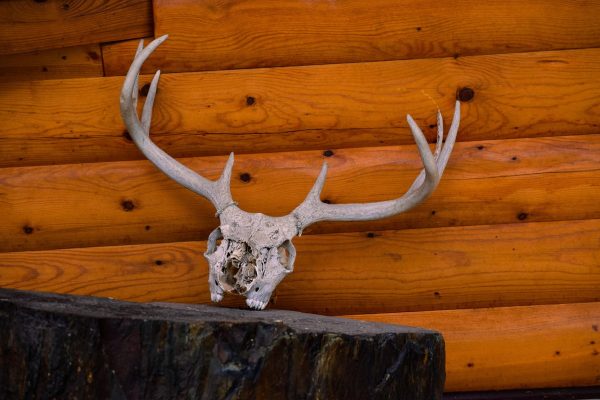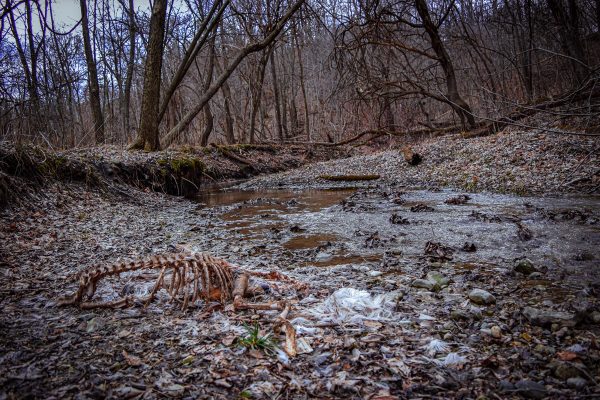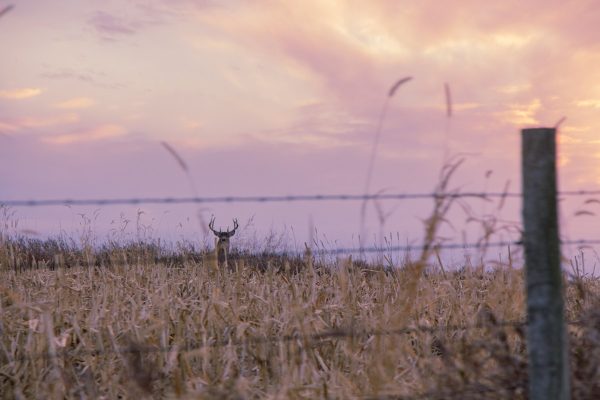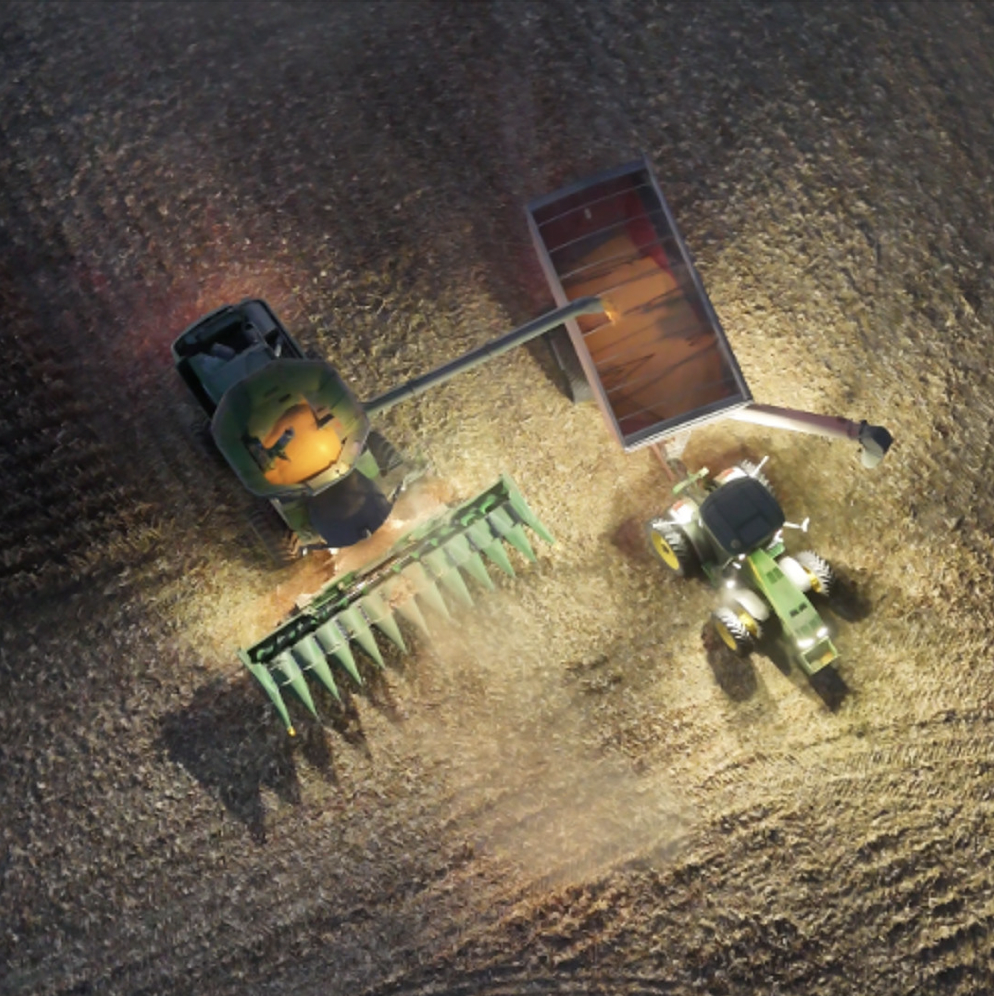Transcription
Clay Roberts: And then I got a video from another friend today. He was going down the field carrying some corn and then he just looked over to his left, and there’s a deer that’s laying in the middle of a bean field.
Tom Litchfield: So the number of deer that’s been reported so far makes this year currently the third largest outbreak documented in modern time in Iowa.
Jace Elliott: We’re looking to probably end up at the second most severe outbreak if we continue to receive reports.
Clay Roberts: Yeah, it has a huge impact on hunting for us.
Joshua Tigges: With some of the richest hunting ground in the country, non-resident hunters feel like lottery winners when they finally pull a tag to bag an Iowa whitetail. However, the story has shifted throughout the past several months. While Iowa whitetails are still some of the most impressive deer in the country, even resident hunters have grown skeptical about the health of their local herd. I’m Joshua Tigges, and after listening to hunters, I decided to dig into this.
Clay Roberts: Definitely places in the past five years where I’ve had a lot of deer and now just there’s nothing there. Like you get a doe or two every night, and now I can barely get any on camera now. It’s not the same as it was
Joshua Tigges: That’s Clay Roberts, a senior agriculture business major at Buena Vista University, who spent the months of October in November with a bow in hand.
Clay Roberts: You can definitely see a big decrease in the deer population. It’s just everywhere you go. I’ve been talking to farmers and just in Harrison and Crawford County, it’s over 75 deer dead, just found.
Joshua Tigges: Now that was roughly a month ago, so one might assume these numbers have risen. In fact, during this time of year, the Iowa DNR experiences an influx in mortality reports without any connection to hunter harvest.
Jace Elliott: Hunters and landowners are still discovering carcasses because they’re starting to use that land more in the hunting season.
Joshua Tigges: I spoke with Jace Elliott, state deer biologist for the Iowa Department of Natural Resources, to see why hunters might be seeing less deer this season.
Jace Elliott: So this year has been one of our more severe years for EHD. I think the last time that the reports was summarized, which was on the 17th of November, we were right at around 1,800 statewide suspect mortalities and to put that into context, that is the third largest outbreak in the history of Iowa.

Joshua Tigges: Granted, EHD or epizootic hemorrhagic disease has had a relatively short history in the state, with the first reported case being in 2012. However, such numbers have started to raise some flags and cause concerns within the hunting community. To gain a better understanding on where this concern stems from, I reached out to Tom Litchfield, a special projects biologist for the Iowa DNR.
Tom Litchfield: A deer that’s susceptible to being infected typically in Iowa will get bit by an infected midge. It’ll fever up one to three days later, and it will be dead from the time it was bitten five to ten or twelve days later, it’ll die if it doesn’t have a resistance to.
Joshua Tigges: Without this resistance, the disease begins to thrive in certain areas where midges or small insect’s breed. That being mud flats where water sources have recently shrunk. Not only the quick and rapid onset, but the raw spread of this disease is not caused by deer-to-deer contact, rather the midges themselves are capable of transferring EHD from one deer to the next. If an uninfected midge bites an infected deer that midge, then infects any other deer it bites.
Tom Litchfield: When you have a reduction in water source, that causes more deer to concentrate in the remaining areas of water, and if there happens to be infected midges there, then it’s just that much easier for the midges to bite deer and bite new deer.
Joshua Tigges: So, it appears the leading cause for EHD is whatever causes shrinking waterbeds, leading midges to multiply, right?
Jace Elliott: There’s a few environmental factors that certainly seem to lead to more severe outbreaks. Those factors are droughts, but more specifically, the timing of the drought.

Joshua Tigges: I began to dig through records and noticed a lack of precipitation received throughout the spring of 2023 in Iowa. According to the Iowa DNR, for the months of March through September, Iowa experienced below average rainfall, upwards of three less inches per month. In effect, this evaporated typical water sources and invited vegetation to take over, enticing midges to emerge in areas of heavy deer presence. Due to this extensive dry period EHD quickly emerged.
Tom Litchfield: Their very first report that I got this year was right after the 4th of July weekend, which that’s early and if things had gotten real active back in July, then we’d be talking a lot bigger than where we are now, but it didn’t. But then in September it took off.
Joshua Tigges: It took off? Why would it take off in September? After the dry, hot months.
Jace Elliott: So, if we received hard killing frosts in September this year, we likely would not have seen the outbreak that we did this year. But because it took so long for temperatures to go below freezing at night in most of the state, these midges had much more time on the landscape to spread the disease and affect deer populations.
Joshua Tigges: While many think drought conditions have a direct link to EHD, comparing the past two years shows that’s not the case with only 17 mortalities reported during 2022, another dry year. But the drought of 2023 emerged much sooner. So, does this mean action needs to be taken? Elliott found that’s not necessarily the case with EHD.
Jace Elliott: The way that these diseases operate, EHD affects deer during a fairly short time span in the year, and it can lead to massive die offs, as was the case this year in certain areas. The silver lining with EHD is that what we found in Iowa is that deer populations that are severely impacted by EHD have a high likelihood of recovering relatively quickly.
Joshua Tigges: A number of years ago, Warren County found themselves in the heart of an EHD outbreak. Yet, Elliot mentioned within two or three years, population levels returned to normal.
Jace Elliott: That’s mostly the case that we’ve seen in Iowa. But from a county standpoint, which is the scale at which we managed here in Iowa, it’s unlikely that even a severe EHD outbreak like this year is going to require management actions.
Joshua Tigges: Demonstrating an ability to bounce back a light emerges at the end of the tunnel, with resistance building. In states around the country where EHD has been present for decades, such as Florida, mortality rates are drastically lower than what Iowa is currently experiencing. Innate resistance has developed after decades of exposure to EHD, signaling time as the greatest healer.
Jace Elliott: Another silver lining to the EHD situation is that in 30 or 40 years, we may not be seeing severe mortality coming from EHD, but rather have a deer herd that is fairly resistant.
Joshua Tigges: The rapid onset and immediate impact of epizootic hemorrhagic disease presents many visible signs to hunters, driving concerns. Yet, historical evidence has demonstrated little the Iowa DNR can do from a management standpoint. However, another far less visible disease has been operating in the background.

Tom Litchfield: Chronic wasting disease, it’s an entirely different disease. It’s caused by a mutated strip of protein called a prion.
Jace Elliott: We’re not necessarily seeing CWD effect here at the population level yet, but it’s basically inevitable that we’ll get there at some point. And that’s why I believe chronic wasting disease is a bigger threat, ultimately to the Iowa deer herd than EHD.
Joshua Tigges: Since 2002, the Iowa DNR has tested over 100,000 deer for CWD or chronic wasting disease. It wasn’t until 2013 when the first positive case was reported, and since then 267 positive results have been tallied. Most recently, 2022 topped the charts as the most recorded cases in a year, at 96. Spread across 16 counties around the state, I quickly discovered CWD was much different than EHD.
Tom Litchfield: Chronic wasting disease in the state of Iowa has impacts on individual deer. Its method of spread is from deer to deer or through contaminated surfaces.
Joshua Tigges: While spread from deer-to-deer contact, what is it that’s being spread? As Litchfield mentioned, chronic wasting disease is an entirely different disease. So, Elliot broke it down for me.
Jace Elliott: It’s not caused by a virus or a bacteria, but rather a prion, which is basically a misfolded protein that has the ability to transmit a misfolded shape onto other healthy proteins that occur naturally in a deer’s brain.
Joshua Tigges: Due to affecting proteins and deer’s neurological processes, contrary to EHD, chronic wasting disease is 100% fatal. However, it does not have the immediate onset EHD has.
Jace Elliott: There’s typically a 16 to even 36-month time span of a lay period, basically where the deer is positive infected with CWD, but it’s still shedding prions on the landscape without experiencing any clinical signs or illness from the disease. So, they appear as perfectly normal, healthy deer, yet they’re infected with chronic wasting disease and potentially spreading the disease to other deer.
Joshua Tigges: To complicate the situation, these prions remain on surfaces seemingly forever. Studies over these infective agents have shown five, then ten in now fifteen-year lifespans, pointing to no time frame when these prions will disappear.
Jace Elliott: On a wild landscape scale, they will persist in the environment indefinitely, and this disease can also spread while it spreads through direct contact with deer. But it can also spread through environmental contamination.
Joshua Tigges: The needed contact with infected deer or contaminated surfaces leads to a slow progression of spread.
Tom Litchfield: We’re still looking at another 40 years, maybe even 50. before the disease builds up to a high enough level in those areas where it will begin to potentially have impact on the deer herd.

Joshua Tigges: Knowing they have to play the long game, the Iowa DNR has been reliant on states with progressed infection rates, to learn more about chronic wasting disease, with how it progresses and management.
Jace Elliott: You know, inter-state collaboration is very critical when it comes to managing chronic wasting disease. It’s something that we do a lot of, Here in the Iowa DNR have, you know, multiple professionals that spend a lot of time working on CWD management and that involves frequent meetings with, you know, colleagues from other state agencies.
Joshua Tigges: Through these meetings, it’s been revealed that effectively the only way to currently control the spread of CWD is to increase testing and structure harvest scenarios in areas with confirmed CWD. The challenge in this is limited clinical signs of infection. Taking upwards of three years to show signs, the Iowa DNR relies heavily on hunters to discover CWD positive deer.
Tom Litchfield: The vast majority of chronic wasting disease deer at this time are perfectly healthy-looking animals. Without the hunters allowing us to test the deer that they’ve harvested, there would be no way for us to track the disease efficiently.
Joshua Tigges: The current shotgun seasons in Iowa, which spans the course of two seasons over the first three weeks in December, prove crucial to providing samples and filling quotas for management numbers. With the most intense hunting period in the state, the Iowa DNR uses this time to gather as much data as possible.
Jace Elliott: Our shotgun seasons are the time where the most hunters are in the field, and it’s where the most deer get harvested in the shortest amount of time. I mean, we’re talking about 50% of our annual deer harvest occurring in two weeks. A lot of staff, including myself, sort of take on an all-hands-on deck approach during the first shotgun weekend where we’re really trying to get out and interact with hunters and to try to collect as many samples as we can.
Joshua Tigges: The Iowa DNR has dedicated itself to effectively monitor the spread of these diseases, and devise management plans when a particular county experiences extensive outbreaks. The picture landowners and hunters are able to paint for the Iowa DNR ultimately determines whether management tactics, such as the number of antlerless tags in the county, need to be adjusted. Through this unison of communication, hunters once again emerge as conservationists.

Clay Roberts: This just helps level out the like amount of deer herds in the certain county and stuff just so one doesn’t get overpopulated. If they do get overpopulated, that’s how more diseases spread. Just trying to help out the population just so it just doesn’t go all the way to waste and you won’t be able to hunt again in our county.
Jace Elliott: We absolutely understand how devastating this disease can be to local areas and properties, and that’s something that we do take into consideration, and we do take it seriously. But I’ll just emphasize that deer in Iowa are managed at the county scale. So, the impact of the disease on a certain property may not be indicative of the county in general. I would just encourage those hunters and landowners to give it time and know that deer in Iowa tend to bounce back very quickly.
Joshua Tigges: In years like 2023, epizootic hemorrhagic disease have a rapid devastating impact on certain areas. Yet, in being an acute disease, the ability for populations to bounce back point towards chronic wasting disease as the hidden threat to deer populations. To further protect the Iowa deer herd, the Iowa Department of Natural Resources has relied on hunters in collaboration with states to develop a direction for management strategies and see what the future of Iowa’s deer herd may look like. Although a time of uncertainty, the Iowa DNR’s commitment to a healthy herd remains stronger than ever in the presence of deadly diseases.









